![“As a community, if we’re looking to help enroll and advocate for patients with rare [kidney cancers], we need to be aware of what is out there,” said A. Ari Hakimi, MD.](https://cdn.sanity.io/images/0vv8moc6/cancernetwork/a69f69efca1ade2e100fbb9cdf798d49ea5a0f94-2966x1684.png?w=350&fit=crop&auto=format)
“As a community, if we’re looking to help enroll and advocate for patients with rare [kidney cancers], we need to be aware of what is out there,” said A. Ari Hakimi, MD.

Your AI-Trained Oncology Knowledge Connection!

![“As a community, if we’re looking to help enroll and advocate for patients with rare [kidney cancers], we need to be aware of what is out there,” said A. Ari Hakimi, MD.](https://cdn.sanity.io/images/0vv8moc6/cancernetwork/a69f69efca1ade2e100fbb9cdf798d49ea5a0f94-2966x1684.png?w=350&fit=crop&auto=format)
“As a community, if we’re looking to help enroll and advocate for patients with rare [kidney cancers], we need to be aware of what is out there,” said A. Ari Hakimi, MD.
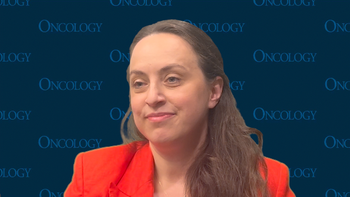
Treatment with the dual inhibitor displayed a short half-life and a manageable toxicity profile in patients with clear cell renal cell carcinoma.
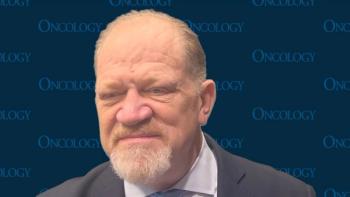
The annual Kidney Cancer Research Summit was born from congressional funding for kidney cancer research, according to KidneyCAN president Bryan Lewis.

Combining renal vaccines with immune therapy may better target tumor cells while limiting harm to healthy tissue, according to David A. Braun, MD, PhD.

Improving data collection and biomarker development across institutions may represent areas of expansion in kidney cancer research.
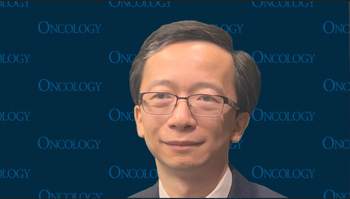
KIM-1 is a biomarker in the blood that may help noninvasively detect kidney cancer, according to Wenxin (Vincent) Xu, MD.

Panelists discuss the growing importance of early integration and collaboration between community oncologists and specialized centers in the evolving chimeric antigen receptor (CAR) T-cell therapy landscape for multiple myeloma, emphasizing timely referrals, coordinated care, and strategic sequencing with other immunotherapies to optimize patient outcomes.

Panelists discuss the essential role of supportive care following chimeric antigen receptor (CAR) T-cell therapy in multiple myeloma, emphasizing infection prevention through prophylaxis, immunoglobulin replacement, and vaccination strategies, along with the importance of coordinated long-term management between CAR T centers and community oncologists to ensure sustained survivorship care.

A phase 0 trial is seeking to assess the feasibility of aiding anticancer cells with cytokines to restore their function.

Although pembrolizumab addressed a long-standing need in adjuvant kidney cancer treatment, combinations with the agent may further bolster efficacy.
![“The trial will be successful, or [we’ll] declare it a success if we see at least 3 of 24 responses overall,” stated Ravi, MD, BChir, MRCP, on the phase 2 LASER trial in RCC.](https://cdn.sanity.io/images/0vv8moc6/cancernetwork/9addaac21d809a7b642a567b0a704cbb15d87ac5-2966x1684.png?w=350&fit=crop&auto=format)
“The trial will be successful, or [we’ll] declare it a success if we see at least 3 of 24 responses overall,” stated Praful Ravi, MB, BChir, MRCP, on the phase 2 LASER trial in RCC.
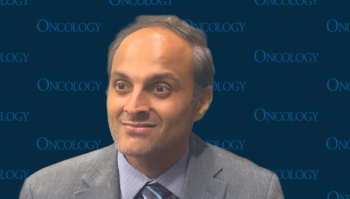
Success with the 177Lu-PSMA-617 radioligand therapy would be transformative for the clear cell renal cell carcinoma treatment landscape.
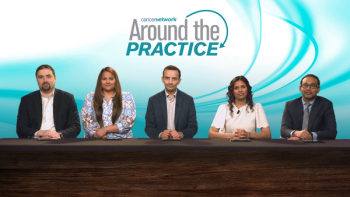
Panelists discuss how the extended follow-up data from MonumenTAL-1 show consistent safety outcomes for talquetamab with manageable discontinuation rates due to skin changes and weight loss, while acknowledging that GPRC5D targeting creates unique toxicities including nail and skin changes that require proactive management strategies, particularly as treatment transitions from academic centers to community practice where quality-of-life considerations become increasingly important.
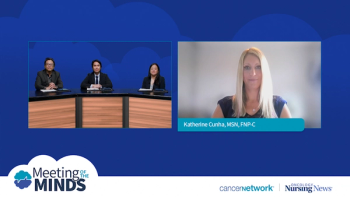
Panelists discuss how treatment selection between lorlatinib and alectinib for ALK-positive non–small cell lung cancer should consider both efficacy data favoring lorlatinib and patient-specific factors like neuropsychiatric history or cardiovascular comorbidities that might favor alectinib.
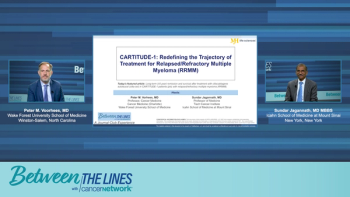
Panelists discuss how extended follow-up from CARTITUDE-1 shows continued overall survival benefit with minimal new safety concerns, reinforcing the durability and safety of cell therapy.

Panelists discuss real-world evidence comparing immunotherapy combinations for metastatic melanoma, highlighting retrospective analyses showing similar efficacy between nivolumab plus relatlimab and nivolumab plus ipilimumab, while emphasizing the relatlimab-based regimen’s lower toxicity and the need for individualized treatment decisions in patients who fall outside typical clinical trial populations.

Panelists discuss how they approach the treatment journey by prioritizing early IDH mutation detection, coordinating multidisciplinary teams for maximal safe resection, and utilizing advanced surgical techniques to optimize outcomes while preserving neurologic function.

Panelists discuss how the 2021 WHO classification has fundamentally shifted glioma diagnosis from histologic appearance to molecular markers, particularly IDH mutation status, which now determines treatment strategies and prognosis.

Panelists discuss how a 48-year-old fitness instructor with ALK-rearranged stage IV lung cancer and bone metastases was successfully treated with alectinib, experiencing manageable adverse effects while returning to modified teaching activities.

Panelists discuss how some patients in CARTITUDE-1 maintained stringent complete remission for more than 5 years without further treatment, potentially redefining the concept of cure in myeloma.

Panelists discuss the prioritization of immunotherapy over targeted therapy for BRAF-mutant metastatic melanoma, highlighting updated RELATIVITY-047 data supporting nivolumab plus relatlimab for its durable efficacy and favorable toxicity profile, and emphasizing the importance of individualized treatment selection based on evolving evidence, patient goals, and comparative analyses of combination regimens.

Panelists discuss how the OPTEC trial and other studies demonstrate that outpatient teclistamab administration with prophylactic tocilizumab is feasible and safe, with no cytokine release syndrome (CRS) events reported in community settings, while acknowledging that Risk Evaluation and Mitigation Strategies (REMS) requirements remain a significant barrier to broader community adoption despite the reality that most CRS is now grade 1-2 and manageable with supportive care, suggesting the field needs to follow lymphoma’s example of bispecifics without REMS restrictions.
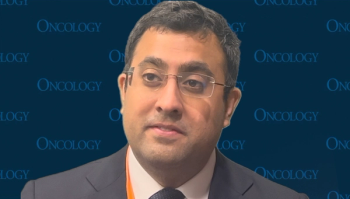
An ongoing phase 1 trial seeks to prove XmAb819 as an effective treatment and ENPP3 as a plausible target in patients with relapsed or refractory RCC.
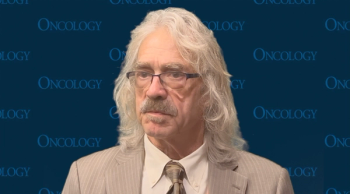
“The therapy is designed to prevent CAR T-cell inactivation and to restore the antitumor immunity of the white blood cells that have gotten through the tumor,” said Wayne A. Marasco, MD, PhD.
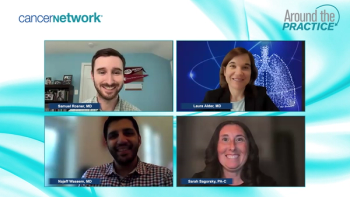
Panelists discuss how a 69-year-old woman with newly diagnosed EGFR-mutant mNSCLC and symptomatic brain metastases requires immediate multidisciplinary care including steroids, radiation oncology consultation, and potential hospitalization, with treatment approach favoring stereotactic radiosurgery for dominant lesions followed by combination therapy like FLAURA2, while emphasizing that asymptomatic patients might allow for initial tyrosine kinase inhibitor treatment with close monitoring before considering radiation to potentially reduce treatment field and minimize long-term neurotoxicity.

Panelists discuss how treatment decisions for a 45-year-old avid rock climber with EGFR-mutant mNSCLC and liver metastases must balance his need to maintain work and income with optimal cancer care, considering his travel requirements and quality of life preferences, while acknowledging that the presence of TP53 comutations would suggest more aggressive disease requiring consideration of combination therapy despite potential lifestyle impacts, and that MET overexpression in the second-line setting offers targeted options like tepotinib or capmatinib.

Panelists discuss how retreatment with platinum doublet chemotherapy after FLAURA2 progression is considered as a potential option when patients have been chemotherapy-free for at least 6 months (using platinum sensitivity principles), with clinicians preferring to exhaust all targeted therapies and considering newer agents like datopotamab deruxtecan first, while acknowledging that retreatment with chemotherapy represents a safety net option for patients who remain fit enough to tolerate it.

Panelists discuss how the decision to continue targeted TKI therapy in the second-line setting depends on multiple factors including intracranial progression status, extent of disease progression, prior radiation therapy, and individual patient circumstances, with clinicians preferring to continue TKI for isolated CNS progression that can be managed with radiation while switching to different regimens for widespread progression or recurrent intracranial disease after prior radiation.

Panelists discuss how their approach to second-line treatment decision-making prioritizes biomarker-directed therapies over biomarker-agnostic approaches, with clinicians preferring to exhaust all targeted therapy options based on molecular alterations identified through rebiopsy and plasma testing before moving to tumor-agnostic treatments like datopotamab deruxtecan or docetaxel, emphasizing the importance of molecular matching for optimal patient outcomes.

Panelists discuss how tissue vs plasma biopsy strategies after first disease progression typically prioritize liquid biopsy due to convenience and improving technology, with tissue rebiopsy reserved for cases of rapid progression in multiple sites, clinical suspicion of transformation or resistance mechanisms not detected on liquid biopsy, or when oligoprogressive disease cannot be managed with local therapy, emphasizing that rebiopsy decisions should be based on whether results will change management.